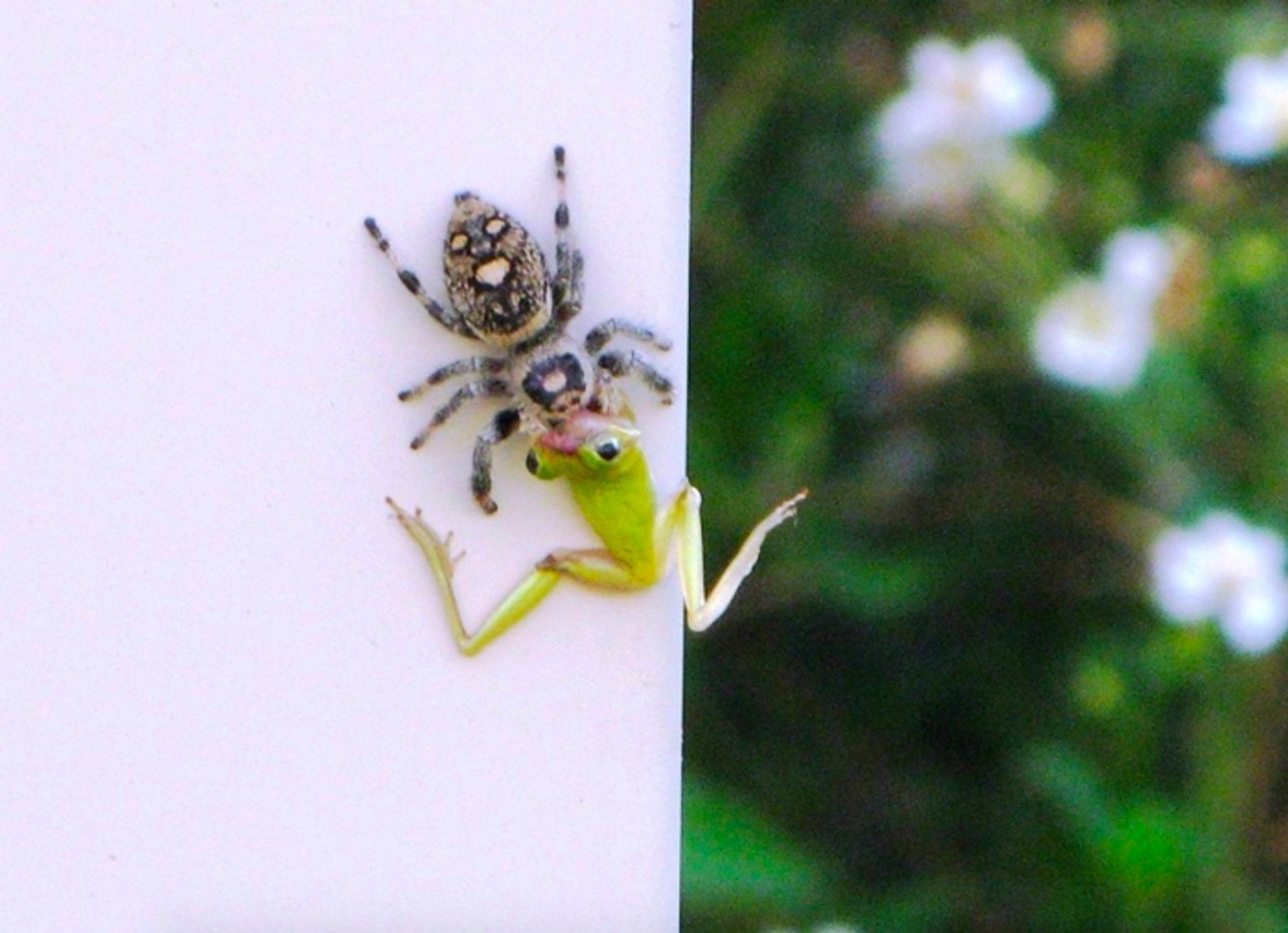These Little Spiders Munch on Vertebrates 1-3x Their Size
It’s common for frogs, lizards, and some other vertebrates to hunt and devour spiders in the wild, but how often do you hear about the exact opposite behavior taking place? Chances are, you don’t hear about it too often, but it happens.
Image Credit: Jeanine DeNisco
A small team of researchers from both Switzerland and the Florida in the U.S. heard about the intriguing behavior through word of mouth and took it upon themselves to find out more about it.
Related: Science explains why these spiders choose to have threesomes
In the Journal of Arachnology, the researchers, led by Martin Nyffeler from the University of Switzerland, published observations of regal jumping spiders from Florida devouring vertebrates that measured anywhere from one to three times their size.
They based their research off documentation found via internet research, which included Google search queries and other reputable sources. In total, their research led them to eight different accounts where witnesses described regal jumping spiders devouring small vertebrates in the wild.
Despite only growing to about an inch in size, regal jumping spiders also happen to be the largest of any other jumping spiders known to the region, so it’s not too crazy to think that they could be the most predacious of their kind. Still, the idea of a spider eating something so much larger than can be both mind-boggling and unsettling if you don't like spiders.
To tackle their large meal, the regal jumping spiders utilize their excellent eyesight to track and strike their prey at just the right time, injecting it with their venom in the process. After a while, the prey succumbs to the venom, and the spider shells little to no effort feasting on the dead creature without wrestling with it or worrying about it running away.
Despite the size difference, the regal jumping spiders sometimes drag their prey up vertical walls to a more suitable feasting location, which is one reason researchers think the behavior went unnoticed for so long. If they had eaten their prey out in the open instead, researchers could have noticed it sooner.
Related: Is spider silk stronger than steel?
Regal jumping spiders probably don’t rely on just frogs and lizards as their primary food source, but because decent food opportunities only come around so often in the wild, they seize the moment. Perhaps hungrier spiders are more likely to take on larger prey for survival.
Worthy of note, other spider species are known to eat creatures of this caliber frequently; this study focused primarily on the regal jumping spider.
Source: National Geographic









